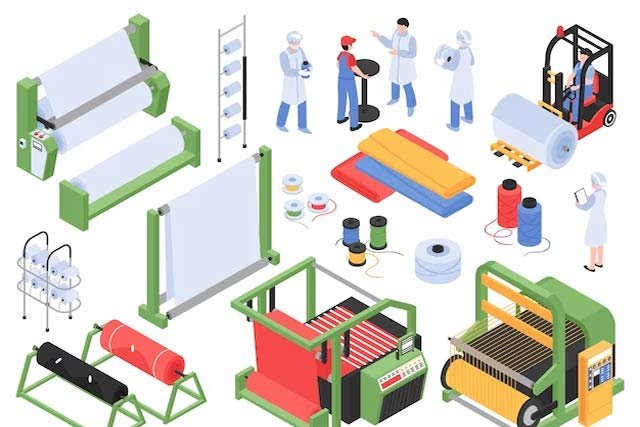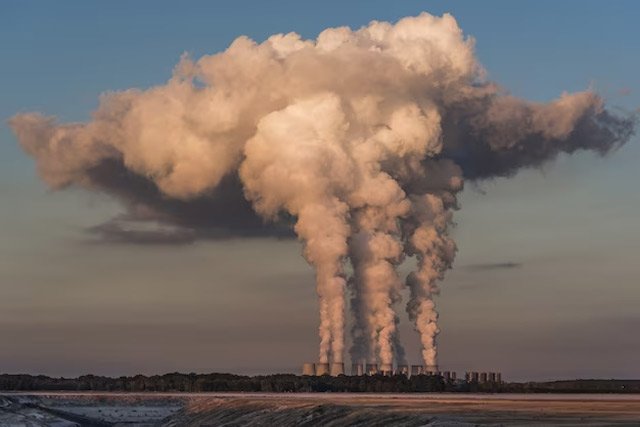Welcome to the fascinating yet disconcerting realm of fast fashion, where trends blink in and out like stars, and the garments that grace our closets are mere shooting stars—fleeting, beautiful, but leaving behind a trail of destruction. In this extensive exploration, we will delve deep into the intricate layers of fast fashion, unraveling its environmental impact, dissecting its toll on workers’ rights, and charting a course towards a more sustainable fashion and ethical future for the industry.
1- Understanding the Fast Fashion Phenomenon

1.1. The Fast Fashion Carousel
Fast fashion is not just a way of consuming; it’s a lifestyle. The carousel of rapidly changing trends, from conception to consumption, defines this industry. Let’s embark on a journey through the relentless cycles of design, production, and delivery that characterize the heart of fast fashion.
1.2. The Social Media Symphony
Social media and celebrity culture orchestrate the melody to which fast fashion dances. As influencers dictate trends, brands race to meet the ever-changing demands of a generation conditioned to crave the latest styles. Join us in exploring the intricate dance between influencers, brands, and the consumer.
2- The Pervasive Impact on Production and Consumption

2.1. The Need for Speed: Fast Production
The constant evolution of trends places immense pressure on production cycles. Dive deep into the factories where the magic—or tragedy—unfolds as they attempt to keep pace with the frenetic demands of the fashion carousel.
2.2. The Low-Cost Temptation: Fast Sale and Delivery
Cheap clothes and quick deliveries fuel the fast fashion frenzy. Explore the psychological and economic mechanisms that contribute to a culture of impulsive buying and rapid disposal.
2.3. Fast Use and the Disposable Wardrobe
Our closets have become transient landscapes, with garments worn only a handful of times before being discarded. Unpack the consequences of a culture that views clothing as disposable, examining the environmental and societal implications.
3- The Environmental Price of Fast Fashion

3.1. Water, Cotton, and Chemicals
Fast fashion’s insatiable appetite has an environmental cost. Delve into the staggering water consumption, chemical usage, and the ecological toll of cotton production.
3.2. Carbon Footprints and the Polyester Predicament
The carbon footprint of fast fashion casts a long shadow. Uncover the industry’s contribution to global emissions and the polyester problem, where cheap fashion comes at a high environmental price.
3.3. Plastic Peril: From Bottles to Fibers
The omnipresence of plastic in clothing is alarming. Explore the plastic journey from bottles to fibers, shedding light on the textile sector’s significant role in plastic pollution and microfiber release.
3.4. The Mountains of Waste
The aftermath of fast fashion manifests in mountains of textile waste. Embark on a visual journey through landfills and discarded clothing, uncovering the sheer scale of overconsumption and waste.
4- Exploitation of Workers: The Human Cost

4.1. Chasing Cheap Labor
To maintain low production costs, fast fashion brand chase the cheapest labor worldwide. Journey through the global landscape of garment production, revealing the exploitation embedded in the supply chain.
4.2. The UK Chronicles: From Leicester to Boohoo
The exploitation of workers hits close to home. Navigate through the challenges faced by UK garment workers, shedding light on scandals in cities like Leicester and the infamous Boohoo case.
4.3. Unbearable Harassment: The Dark Side of Indian Factories
Unveil the grim reality of gender-based violence and harassment faced by female garment workers in Indian factories. Examine the industry-wide culture of violence and its repercussions.
5- The Need for Change: Progress and Challenges

5.1. A Decade After Rana Plaza: Progress Report
Ten years after the Rana Plaza disaster, we assess the progress made in ensuring garment factory safety. Explore the impact of the Bangladesh Accord and the persisting challenges in achieving fair wages.
5.2. Environmental Claims Under Scrutiny
Greenwashing practices come under the microscope. Investigate the claims of eco-friendliness and sustainability made by giants, with a focus on recent examinations by regulatory authorities.
5.3. COP26 and Fashion’s Environmental Pledge
In the aftermath of COP26, witness the fashion industry’s renewed commitment to environmental goals. Analyze some well-known Fast Fashion brands for Climate Action and the role of major brands in shaping a sustainable future.
6- Consumer Habits and the Path Forward

6.1. A Cultural Shift: Consumer Behavior
Despite the challenges, there’s a glimmer of change in consumer behavior. Explore research findings that indicate a shift towards wearing clothes longer, embracing second-hand purchases, and cultivating a mindset of sustainability.
6.2. The Wardrobe Revolution: From Unworn to Sustainable
Peer into the depths of UK wardrobes filled with unworn garments. Uncover the potential for a wardrobe revolution as consumers become increasingly aware of the environmental impact of their choices.
6.3. Calls for Intervention: Watchdogs and Government Regulation
Navigate through the calls for a fashion watchdog to regulate purchasing practices. Explore the need for government intervention to legislate against unethical buying practices and ensure fair wages for garment workers.
6.4. The Long Road Ahead: Legislation and Systemic Change
As we gaze into the future, we recognize the need for comprehensive legislation and systemic change. Envision a fashion industry transformed into a force for positive environmental and social impact.
Conclusion
In this odyssey through the labyrinth of fast fashion, we have unearthed the environmental devastation, the human cost, and the slow but hopeful progress toward a more sustainable industry. The road ahead may be long, but with collective awareness, consumer empowerment, and systemic change, the fashion industry can redefine itself—a beacon of beauty that doesn’t compromise the planet or exploit its workers.
FAQs
What defines fast fashion?
Fast fashion is characterized by rapid trend turnover, prioritizing quick, affordable production and constant style innovation.
How does fast fashion impact the environment?
Fast fashion contributes to environmental degradation through high water usage, carbon emissions, textile waste, and plastic pollution.
What are the social consequences of fast fashion?
Fast fashion often exploits workers globally, leading to unfair wages, unsafe conditions, and a pervasive culture of worker exploitation.
Can individual consumers make a difference?
Absolutely. By adopting sustainable habits like choosing quality, supporting ethical brands, and embracing second-hand options, consumers can contribute to reducing fast fashion’s impact.
Is there progress towards sustainability in the fashion industry?
Progress is slow, but commitments from major brands, initiatives like the Fashion Industry Charter for Climate Action, and increased consumer awareness indicate a shift towards a more sustainable fashion future.

